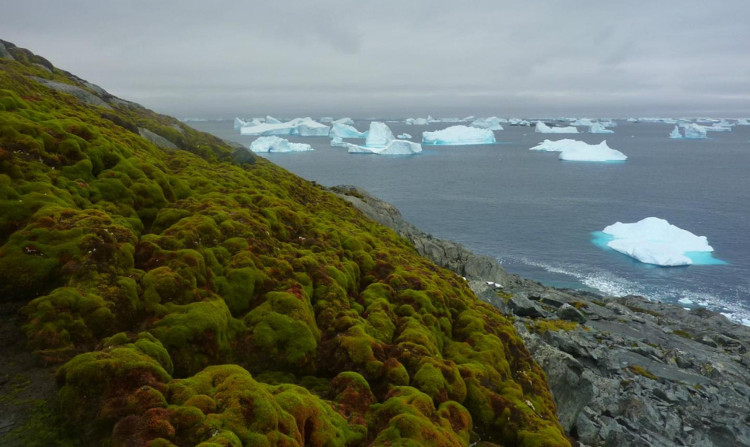Found this in the Arctic, the scientists are extremely worried
Not naturally, the Arctic and Antarctica are gradually becoming the "hot spots" of the world. And with the recent discovery, fears are growing.
In recent years, the two poles of the Earth have become "hot" points - both literally and figuratively.
From the rising temperatures of permafrost permafrost, to the ecologically " ecologically green" ecosystem, the future of Antarctica and the Arctic is making people more anxious.

Partial image of Antarctica today.
And recently, during a field trip to the Arctic, an expedition from the United Kingdom found an object that surprised everyone. In the middle of the Arctic Ocean - where people have never noticed because the amount of ice is too large, there is a huge mass of objects floating, containing all the plastic and polystyrene .
It is known that this is the farthest area in the North that the garbage has ever come. It is only about 1,000 miles from the North Pole (about 1,609km).
Specifically, the expert team led by Pen Hadow is carrying out the Arctic exploration mission. It is known that Hadow was also the first person to move from Canada to the Arctic alone without the need for supplies from the mainland.
Their mission is to collect information about the terrain. However, finding plastic and polystyrene (a very toxic plastic) here made them really startled, because no one expected that plastic garbage could drift to the sea all year round like ice. Moreover, this place is too far from the mainland.
"For 25 years of experience in Antarctic exploration, I have never seen such a large and clear junk," said Hadow. " The junk containing polystyrene is stuck on an iceberg ."
"This finding is a worrying sign, suggesting that the ice has melted to the point where it allows large quantities of contaminants to contaminate the area. " ) share. "This has the potential to greatly harm the Arctic's biological life."

Polystyrene blocks are found in the Arctic.
In fact, there are many rivers flowing into the Arctic, but they are stuck under ice. The amount of water that "internal real estate, foreign real estate". However, when the frost melted, the danger began to appear. Now, science is afraid that pollutants - especially microplastic (in toothpaste, cleanser .) will approach this most isolated area of the Earth. .
As expected, with the current warming speed of the Earth, by 2040, the Arctic will no longer freeze. Plus the risk from environmental pollution, fate of animal species - plants here are really worrying.
"The wild nature of Arctic Ocean is protected by permafrost," Gordon said. "The ice is melting, wild animals are first influenced by human hunting boats. We need to immediately take care of them against these new risks."
- Detects shock under the Arctic ice shelf
- An overly worried pregnant woman is prone to premature birth
- Detecting intact bacteria under Arctic ice 50,000 years
- Volcano under the Arctic ice
- Arctic ice is melting record fast
- Beautiful scenery is unique in the North Pole
- Humanity will be threatened if the extremely toxic substance under the Arctic ice layer escapes
- Interesting facts about animals living in the Arctic
- Ice in the Arctic is likely to disappear by 2030
- Sea elephants become Arctic explorers
- Earth warms, the Arctic will explode vegetation
- Arctic will melt ice after 5 years
 Is the magnetic North Pole shift dangerous to humanity?
Is the magnetic North Pole shift dangerous to humanity? Washington legalizes the recycling of human bodies into fertilizer
Washington legalizes the recycling of human bodies into fertilizer Lightning stone - the mysterious guest
Lightning stone - the mysterious guest Stunned by the mysterious sunset, strange appearance
Stunned by the mysterious sunset, strange appearance